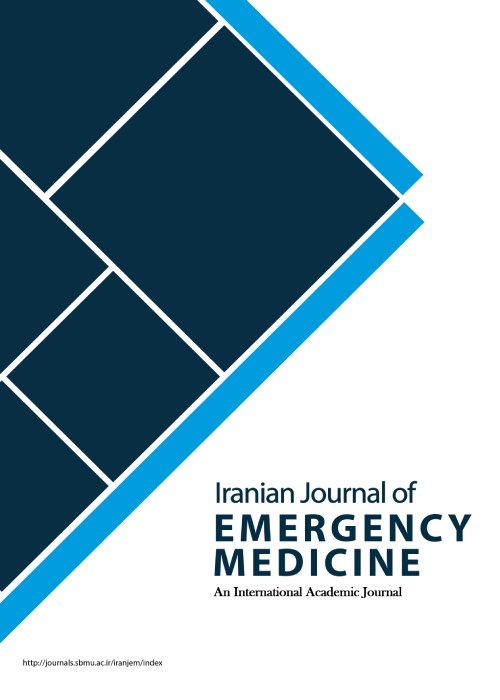Causes of Prolonged Length of Stay for Patients Referred to the Emergency Department; a Cross-Sectional Study
Author(s):
Abstract:
Introduction
Prolonged length of stay and failure to timely disposition of patients in the emergency department (ED) lead to negative impact on the quality of service presentation, increasing dissatisfaction, and finally violence. Therefore, assessing the causes of pro longed length of stay for patients in this ward and presenting some applicable solutions against it, can significantly help improving the quality of services and more satisfaction of patients. The present study was designed with the aim of evaluating the c auses of prolonged length of stay for patients in the ED.Methods
In a cross - sectional study, the causes of prolonged length of stay for admitted patients were assessed in the ED of Alzahra Hospital, Esfahan, Iran, during the fall 2010. A checklist was pr epared with 11 cases included: age, gender, triage level, the time of receiving admission code and discharging from ED, the chief compliant of patient, hospitalization and discharge services, date of hospitalization, and the outcome for all patients. The l ack of available bed in the ward, request for doing tests and unnecessary consultations, delay in entering the samples to the laboratory, delay in visit and disposition of patients by senior resident on duty, need to therapeutic proceedings by another service, delay in informing the resident of the related service, lack of coord ination between the other wards and ED for patient's transportation, and financial inability of the patient were considered as the probable causes of prolonged length of stay. Finally, gathered data was analyzed by using SPSS version 18. Results
95 (18. 8%) patients had prolonged ED length of stay (>6 hours) with the hospitalization mean of 10.4±5.5 hours. Prolonged length of stay cases were significantly higher in patients under 30 years old (p=0.0001), in weekends (p=0.05), and second level triage (p=0. 01). The most mean of prolonged length of stay were related to the surgery service with 20.0±21.2 hours, multi - service hospitalization with 16.7±12.1, neurosurgery with 15.6±15.1, internal with 14.2±16.1, orthopedic with 13.09±5.7, infectious with 13.4±13. 1, and neurology with 6.7±3.0 (p=0/001). The most common causes of prolonged length of stay for patients were related to prolonged consultation time, need to a therapeutic performance by another service, lack of available bed in other ward, and delay in disposition of patients by other services (p=0.03).Language:
Persian
Published:
Iranian Journal of Emergency medicine, Volume:1 Issue: 1, 2014
Pages:
45 to 49
magiran.com/p1563514
دانلود و مطالعه متن این مقاله با یکی از روشهای زیر امکان پذیر است:
اشتراک شخصی
با عضویت و پرداخت آنلاین حق اشتراک یکساله به مبلغ 1,390,000ريال میتوانید 70 عنوان مطلب دانلود کنید!
اشتراک سازمانی
به کتابخانه دانشگاه یا محل کار خود پیشنهاد کنید تا اشتراک سازمانی این پایگاه را برای دسترسی نامحدود همه کاربران به متن مطالب تهیه نمایند!
توجه!
- حق عضویت دریافتی صرف حمایت از نشریات عضو و نگهداری، تکمیل و توسعه مگیران میشود.
- پرداخت حق اشتراک و دانلود مقالات اجازه بازنشر آن در سایر رسانههای چاپی و دیجیتال را به کاربر نمیدهد.
In order to view content subscription is required
Personal subscription
Subscribe magiran.com for 70 € euros via PayPal and download 70 articles during a year.
Organization subscription
Please contact us to subscribe your university or library for unlimited access!


